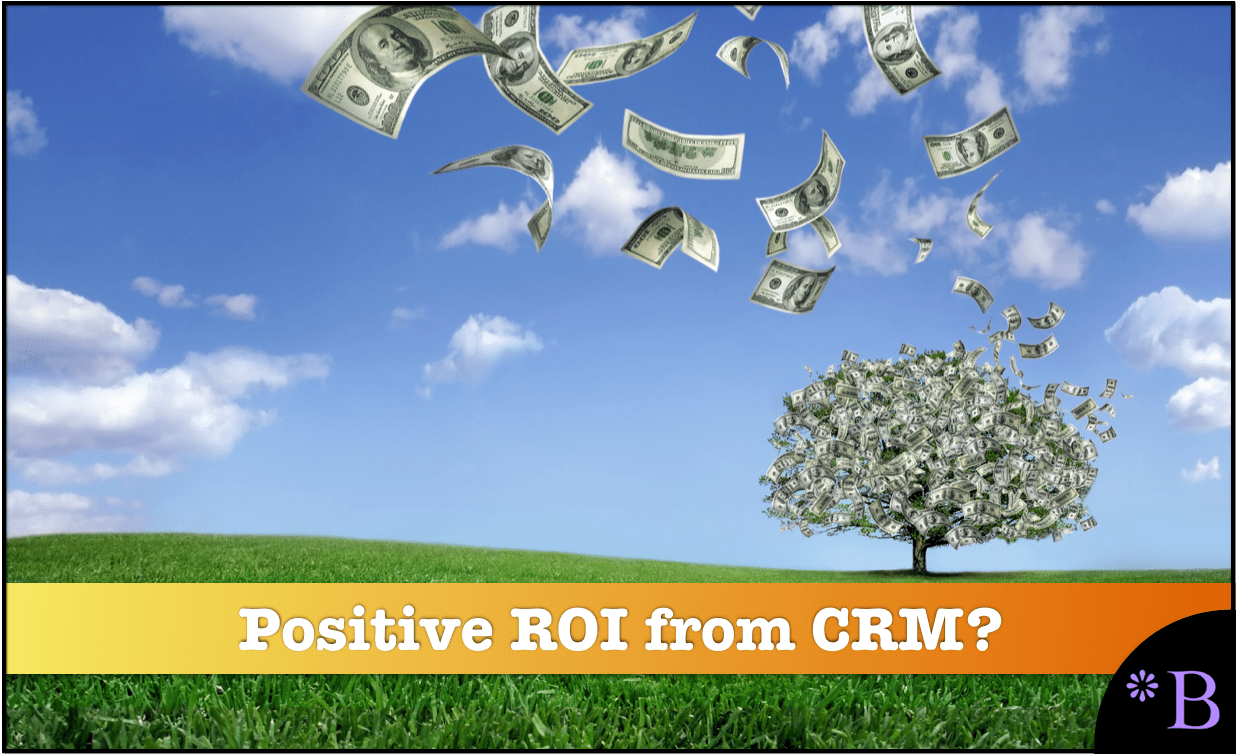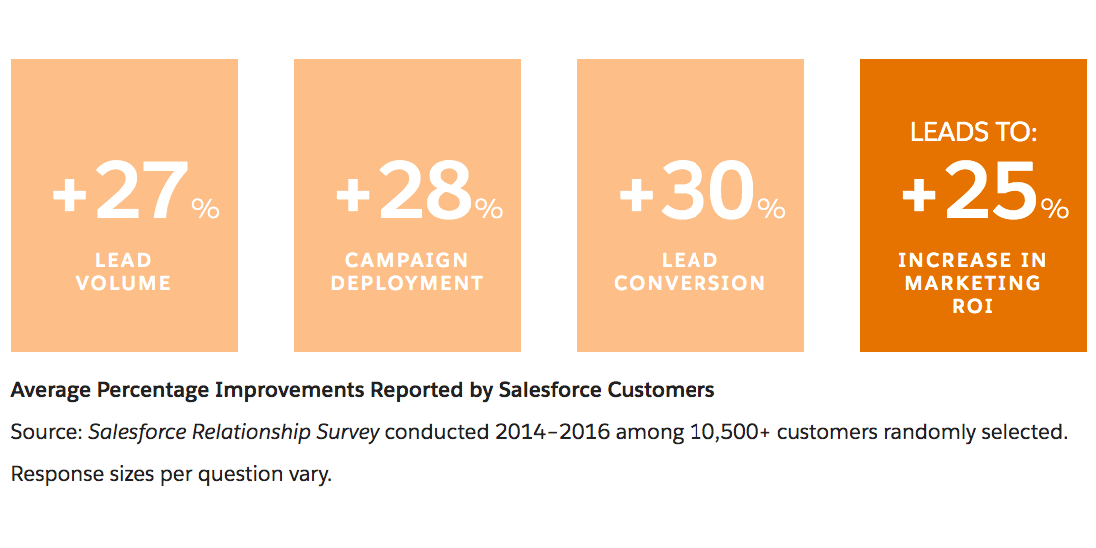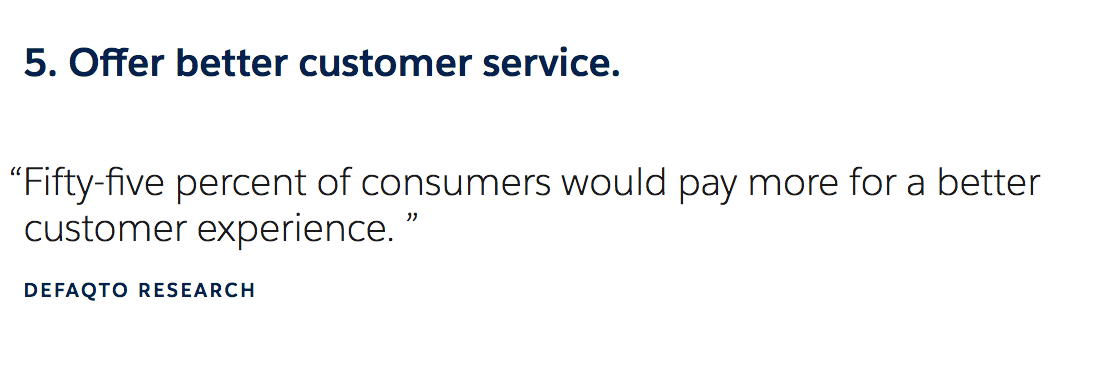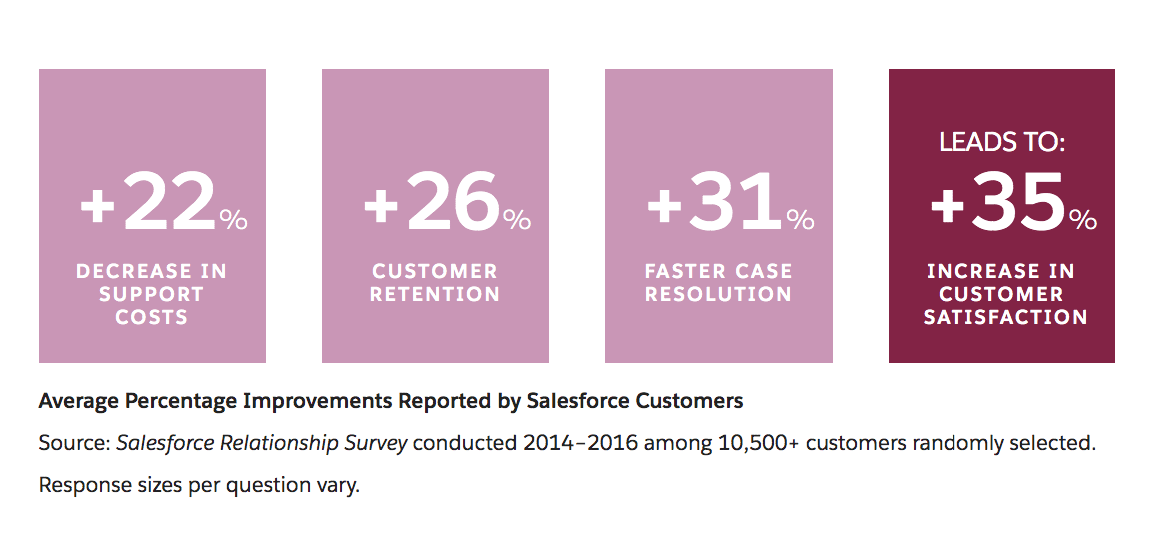CRM’s Real ROI: The Problem with CRM Salesforce Does Not Want You to Know
Executive Summary
- CRM systems are presented as a “hot” software category.
- There are excellent questions as to the ROI of CRM systems.

Introduction
CRM is “hot” right now as a software category even though, in my estimation CRM in most cases, has a negative ROI. I cover this at Brightwork’s software category page on CRM. Meanwhile, a software category with what is most likely a far higher ROI, like BOM/PLM software, is far less commonly implemented.
But the topic for this article is why CRM most likely has a negative ROI.
Our References for This Article
If you want to see our references for this article and other related Brightwork articles, see this link.
The Negatives of CRM Systems
The following issues are infrequently discussed but are serious problems with CRM systems.
The Problems with CRM Systems
| Issue Name | Issue Description |
|---|---|
| Deliberate Falsification of Sales Data | Secondly, not only do account executives place fake numbers into CRM systems (in order to buy more time while they look for a job), but the VP of sales will also manipulate the sales numbers of their account executives as the VP will have their own set of incentives. Sales forecasts are a problem not matter what the system that is used, and CRM systems do nothing to account for that. |
| Long Term Compliance Issues | Since CRM systems were first introduced they have had unending compliance issues. That is salespeople have shown a distaste for putting information into CRM and therefore the data has a strong tendency to be out of date and inaccurate. |
| Following Up Dead Leads | As every person who is contacted is put into the CRM system, it creates an artificial view of who is a lead and who was just browsing. The very categorization of any contact as a "lead" creates this misimpression in the mind of the salesperson and especially in the mind of sales management who is far from the interaction and projects a lead status onto anyone in the system. |
| Enabling Micromanagement | CRM also allows management to snoop on salespeople and to generally micromanage, which is negative for sales. In fact, that is one of the most common usages of CRM. |
| Lowering Job Security | CRM allows for jobs to be more readily outsourced to less expensive countries, so is a negative for employment in the developing countries — but that is probably not a concern for most of the readers of this article. |
| Deskilling the Workforce | Companies normally use CRM systems to control salespeople and to monitor them. The CRM system puts the company in the position of intruding on the sales process. The problem is that the management of sales people is usually low in competence and overestimates their ability to add value to the sales process. |
Keeping These Issues Under Wraps
These issues are not discussed or difficult to find because vendors and consulting companies that are very influential in IT media do not want these issues discussed.
Expanding on the Compliance Issues of CRM
Salespeople often say that they don’t have time to perform the data entry or to update the data every time something changes on an account. However, there is another unstated reason for the lack of compliance. If anyone has experience with VPs of sales, they tend to be control freaks, and the CRM system is their method of interfering with their account executives.
What CRM Vendors Say About CRM
Salesforce has the following to say about CRM effectiveness.

And what is the percentage with a CRM system? Furthermore, are all of the marketing leads. At Brightwork, we get a large number of contacts from our forms or LinkedIn or our messenger, and very few of these contacts are actually from companies that want to buy something.

Do the customers that fill out this survey have the internal studies to support this, or did they choose from percentages provided by Salesforce.
If leads increased by 30%, Salesforce would be significantly increasing the sales volume at companies. However, how can this be if nearly all companies have CRM systems?
Question: Does 30 % increase the global economy also?

What does this statement have to do about CRM? CRM is a system that records sales activities.
Question: What does this have to do with the depth of relationships?

How do CRM systems help sell to existing customers?
Question: If they are a current customer, is the CRM system still necessary?

The evidence is that CRM systems erode rather than improve customer service. Therefore even if this poll is correct, it may be inversely related to the use of CRM.

This calls into question the legitimacy of the entire Salesforce poll.
Question: If CRM increases customer satisfaction by 35%, then why has customer service gone down across sectors over the past several decades why the use of CRM systems has gone from zero to very high levels of usage?
Is Your CRM System Decreasing Forecast Accuracy?
CRM is an interesting software category. Before SaaS and Salesforce, on-premises CRM had one of the highest failure rates of any application. Siebel was, of course, the market leader (Oracle acquired Siebel in 2005, and as is standard is now an inconsequential application), Then other companies like SAP and Oracle developed CRM applications. These applications failed in implementation at high rates. Now, most of the CRM market is delivered by SaaS, and it is the only category of enterprise software distributed this way.
Why?
Some have argued that CRM is a natural fit for SaaS delivery because it is a more straightforward application and requires little computation or configuration.
CRM (customer relationship management) is one of the fastest-growing categories of enterprise software. Forbes predicts that in 2015 the sales of CRM will surpass that of ERP. This will be the first time that ERP will be in second place in the enterprise market since the mid-1980s. CRM continues to be a popular application. But the results of a review of CRM implementations in companies can often be quite uninspiring. CRM has shed much of its image as a widow maker for IT. But when I sit with marketing and sales personnel as they show us their sales data, I see continuing data quality issues. These sessions end with a statement from the marketing or sales director we are sitting with saying something like
“Much of this data is out of date.”
The number one problem with CRM is getting quality sales data, which continues even with all of the advancements in CRM technologies. All manner of data quality issues has led to software vendors with products that clean CRM systems such as Talend and Data Cleaner (although the focus of these applications is more on low-level quality issues such as duplicate records).
Many companies are happy with how quickly they can get a CRM system operational, but a detailed review of the data quality is almost always disappointing. This is a greatly deemphasized topic by both consulting companies. Particularly the major consulting companies and the CRM software vendors, as if clients knew the real average quality of sales information in CRM systems, would put a serious damper on CRM software sales.
CRM and Forecasting
CRM started as a contact management system and has since grown in many directions. CRM often has so many different attributes that it can be difficult to say definitively what CRM is.
- CRM was never developed for forecasting.
- IT is often used for forecasting. The forecasting functionality is quite limited.
Many CRM software vendors propose that their systems are the key to improving the sales forecast’s accuracy. This is a complaint on the part of the sales forecasting vendor, Right90. That prospects will tell many times they (Right90) that sales forecasting is taken care of because they have a CRM system.
- The significant problem is that CRM is not designed to track sales at a product-location combination.
- The unit of measure of CRM applications tends to be sales, and the focus is on the customer.
If one looks at the typical sales funnel report in a CRM system. This report declares how the sales decline from prospecting to won deals.
Forecasting is a Relative Term
When sales forecasting is performed within CRM systems, it is carried out at only the highest level of aggregation, which is the forecast per customer or a particular dollar quantity. This type of forecasting does not do very much for operations. For instance, let us take the example of a consulting company.
A consulting company offers some services, which means using consultants with particular skills, and capabilities indicate that the consultants are differentiated from one another and are not interchangeable. A client that wants a database administrator can’t be satisfied by offering them a web developer because that is what the consulting company happens to have in “inventory.”
The CRM forecast that a particular customer will sell or a specific dollar amount will be sold does not help the manager of the consultants because the director of consultants needs to know what specific skills are required for a project.
- Making the Forecast: To the salesperson, a forecast, which matches his or her quota, is accurate. So if a salesperson has a quota of $500,000 in a quarter and sells $525,000, that is an exact forecast, according to the salesperson and the salesperson’s manager.
- Operational Details: The salesperson may have forecasted one customer at a high probability of being closed. This would have led to a project requiring a database administrator and a client with a small probability of being closed. This would have resulted in a project that required a web developer. (The nature of forecasting is the more detailed the level of the forecast, the lower the forecast accuracy.)
- Operational Outcome: If the low probability prospect did not come through, but the high probability opportunity did not come through, and the consulting manager used the forecast to hire resources, the fact that the salesperson forecasted dollars accurately does not help in the consulting manager. This is because they hired a database administrator when they now need a web developer.
This distinction between how sales measures forecast accuracy and how operations measure forecast accuracy applies throughout different business types. This is why being able to correlate the sales forecast to activities is so important.
How Accurate is a Typical Article on the Benefits of CRM?
It has been observed that many people and companies propose an ROI on CRM systems. However, our analysis of CRM is that, on average, CRM systems have a negative ROI. This has less to do with the actual technology of CRM than it has to do with how CRM systems tend to be used. In this article, I will review and critique a typical article on CRM’s ROI.
CRM Benefits Must Be Planned, Performed & Measured to Maximize ROI
“Even a semi-successful CRM software implementation can show a positive return on investment. The advantages of CRM to the enterprise are so great that assuming you meet only part of your goals you should see a financial payback. But are you getting as much ROI out of your system as you can? That’s a different question and the answer, all to often, is ‘probably not’. The fact is that most CRM implementations tend to leave money on the table because the business doesn’t focus enough attention on getting the best possible ROI.”
Lacking Evidence
As with most articles, there is no evidence presented as to whether CRM does show a positive ROI. And the author uses the term “can,” which means there is no commitment either way. CRM should be the most straightforward application to show a positive ROI because it connects directly to sales. And sales are measurable.
However, no one has ever performed a study that shows a positive ROI from CRM. Yet the typical article on the benefits of CRM can be shown in these quotes from CRM Search.
“The returns are all the ways that the CRM system contributes to top line revenues, cost savings or cost avoidance. In a well-implemented business system these benefits tend to be extraordinarily diverse. Returns come from nearly all income categories, such as incremental revenue, margin, lower costs and improved productivity. In addition to the “hard” benefits there are almost always “soft” benefits that don’t show up directly on the balance sheet, but nonetheless represent real benefits to the business. Classic examples include improved customer loyalty due to better customer service, improved decision making from having better and more timely information and improved transaction throughput resulting from decreased cycle times.”
CRM Leads to Higher Sales?
Actually, over time all of the benefits should show up in sales increases. Improved customer loyalty leads to higher sales, but there is no evidence that CRM leads to better customer service. Many companies have used CRM to deskill their service workforce. A CRM system can be accessed from anywhere to hire low-cost workers in third-world countries that generally provide lower customer service than workers in the home country. This is, in fact, one major problem with CRM (there are many) that CRM provides the false impression that customer service skills are less important. If we think of significant providers of phone-based customer service, banking insurance, etc.. which one of these areas has seen an increase in customer service over the past 15 years, a time when many CRM systems have been implemented?
“One of the ways CRM software can increase your revenues is to let you, and your staff, track more closely where in the sales cycle each customer is. “When you review the sales pipeline you can see what’s coming up,” says Ray Simon, principal of ENPIO, a San Francisco, CA, consultancy. “You can see the deals you’ve already done 80% of the work to win. When your sales staff can clearly see this they can put in the last 20% of the effort on those people and drive them home.”
Snooping on Salespeople
And it also allows management to snoop on salespeople and to generally micromanage, which is harmful to sales. That is one of the most common usages of CRM. If anyone has experience with VPs of sales, they tend to be control freaks, and the CRM system is their method of interfering with their account executives. Secondly, not only do account executives place fake numbers into CRM systems (to buy more time while they look for a job). But the VP of sales will also manipulate the sales numbers of their account executives as the VP will have their own set of incentives. Sales forecasts are a problem no matter what the system that is used, and CRM systems do nothing to account for that.
“CRM software is a powerful tool for reducing inefficiencies that are costing your business money. For example, CRM systems can reduce your customer acquisition costs in several ways, such as making your sales force more efficient, and allowing them to call on more customers with more relevant messaging.”
How does this author know it’s a powerful tool? It can be, but is it?
CRM to the Rescue for Improving Disasterously Disorganized Sales Organizations
“Say you have two people making sales calls in the Boston area,” says Nancy Keddy, CEO of Touch Ahead Software, a Boston, MA, CRM vendor, “and they both call on the same company in the same day. Not only it that a waste of effort, but it makes your company look foolish to a potential customer.”
If your sales organization is so disorganized that it does not know a simple account assignment, which is communicated to all account executives and this scenario happens, a CRM system is probably the least of your concerns.
“With CRM, “you can easily see all the information about an organization at the organization level,” Keddy says. “If you’re selling 17 different types of widgets you need to be able to look at the organization and see everyone in your organization who is communicating with that organization.”
As you can with a spreadsheet. Google Sheets has excellent shareability. All it takes to implement is to upload an Excel spreadsheet with this information. Send the invites to the right email addresses, and presto, everyone in the organization can see the information of accounts and products. And it can be updated.
Multidimensional Views of the Customer
“One of the most powerful benefits CRM software offers is a complete view of your customers and customer relationships. That includes their needs, preferences and buying patterns. Among other things this makes it easier to upsell your customers by knowing their needs more intimately.”
Another hypothesis, but is this true? If it is, why are there no studies that exist showing the increased sales?
This type of thing is so easy to write, but proving it is another matter.
“Gorin cites the example of a website he bought a couple of ink cartridges from. “I got an email from the supplier that said it seems you have this type of printer. Here are some other cartridges you can use, here’s some specials on related equipment, here’s some cable suggestions.”
Is that a CRM system doing that? That may be a database that is part of e-commerce or other shopping applications integrated with the website.
CRM Helps Identify Inefficiency?
“One of the most obvious benefits of successful CRM software, in retrospect, is that it helps to identify places where your operations are unacceptably inefficient. Not only will this make the operation better, it can be an important factor in obtaining the vitally important employee buy-in.”
It remains to be demonstrated what the author is talking about. I have reviewed many CRM applications and have never seen this particular functionality.
“By using your CRM system’s data you can better understand your customers and meet their needs more effectively. This includes making sure that promises to the customer are kept, schedules are met (or the customer is alerted in a timely fashion if they won’t be), and the customer’s needs can be anticipated.”
Possibly but we don’t know. Promises to the customer are part of the availability of promising software. That can be accessed from the ERP system. In any case, that is not the core of what CRM does.
Conclusions
There is no evidence as to whether CRM shows a positive ROI. CRM should be the most straightforward application to show a positive ROI. This is for the following reasons:
- Implementability: It is a relatively simple application to implement. The ten application categories reviewed by Brightwork Research & Analysis are by far the most straightforward application category. You can see all 1o of the software category analyses at the following link.
- Maintainability: From a systems perspective, CRM systems are relatively simple to maintain. (Although from the compliance perspective they tend to fall off the cliff, at least the system maintenance, which is where the IT costs are incurred is low)
- SaaS or Cloud: Related to the previous point, virtually all CRM systems are SaaS or Cloud. Which tends to reduce the long-term TCO.
- Direct Financial Traceability: It connects directly to sales. And sales are measurable. All that is necessary is to remove the portion of the sales due to the natural increase in the business. This can be done by reviewing the historical trend in sales over several years and adjusting.
- Ubiquity: CRM is widely installed; it is the second most popular software category after ERP. Therefore there are plenty of case studies.
However, no one we have ever seen has ever performed a study that shows a positive ROI from CRM. That should make one immediately suspicious of CRM’s assumption of positive ROI. There seems to be an unlimited number of people proposing that CRM systems have a positive ROI. And yet, no one willing to prove that it is the case.
Secondly, if CRM systems are implemented at a company, do sales increase? If all of the companies in a sector install CRM systems, do all of their sales increase? If not, are CRM systems a defensive measure to keep other companies (that have implemented CRM systems) from taking customers?
The high-level data tracked by sales in the CRM system is a forecast regarding how sales see the world. But it does not reflect a forecast of the way that operations know the world. For a sales forecast to be valuable, it must be converted into a higher detail level by operations. CRM systems use the term forecast to represent a forecast at a level of aggregation that is not considered a forecast by operations. One can produce a sales forecast in a forecasting application, and this is done all the time. When the term forecast is used in CRM, it should be placed in quotation marks to differentiate it from other types of forecasts.